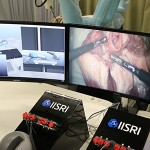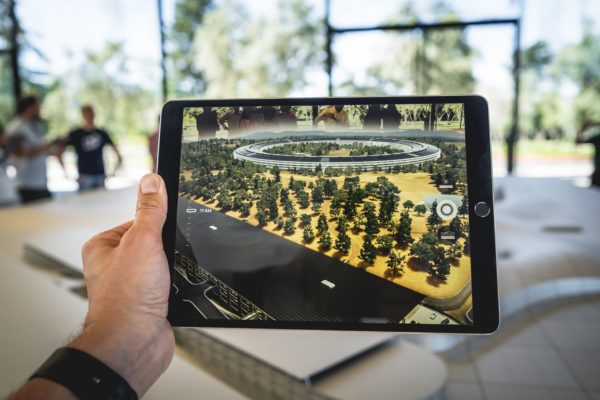Haptically-enabled robots are set to save lives and improve treatment in a new era of surgical care.
The world’s first haptically-enabled minimally invasive robotic surgical system, with collision avoidance, modular instruments and automatic patient/bed adjustment, has been developed by researchers from the Institute for Intelligent Systems Research (IISRI) at Deakin University, in collaboration with Harvard University.
The innovation was unveiled recently at the Australasian Simulation Congress, hosted by Simulation Australasia, at the Melbourne Convention Centre.
The Haptically-Enabled Robotic Assisted Minimally Invasive Surgical System (HeroSurg) has several unique features that allow it to overcome many of the limitations of existing robotic laparoscopic systems.
The Director of IISRI, Professor Saeid Nahavandi, said that haptic feedback (sense of touch) was the missing link that will provide natural hand-eye co-ordination and dexterity currently missing in existing systems.
In particular, the haptic feedback will enable surgeons to retain the sense of touch, improving their ability to diagnose and treat many conditions, especially those requiring surgeons to palpate and diagnose soft tissue damage.
Professor Suren Krishnan, a surgeon from Royal Adelaide Hospital and Honorary Professor at IISRI, who collaborated on the project, said HeroSurg was a “significant development in the ongoing efficacy of robotic surgical systems in operating theatres.”
“Haptics will add a greater ability to distinguish diseased tissues involved with cancer from normal tissues,” Professor Krishnan said.
“It will also allow surgeons to feel more delicate tissues weakened by infection or inflammation and dissect them more carefully – and allow us to use finer and more delicate materials such as finer sutures in microsurgery.”
Professor Nahavandi noted that, once in use, HeroSurg will result in fewer traumas for patients, fewer risks of blood loss and infection, and shorter recovery and hospital stays.
“Other new features include high-resolution 3D images, an increased range of motion for the surgeon, and a more ergonomic workstation console,” Prof Nahavandi said.
[testimonial_text]HeroSurg will assist surgeons to perform demanding surgical procedures with comfort, accuracy and safety by providing real-time collision avoidance for medical instruments, and stereo-endoscopic vision. In the not-too-distant future, many patients may be thanking HeroSurg for saving their lives.[/testimonial_text]
[testimonial_picture name=”Professor Saeid Nahavandi” details=”IISRI Director”]
 [/testimonial_picture]
[/testimonial_picture]The project was led by Dr Mohsen Moradi Dalvand, a Deakin research fellow in Robotics and Haptics, who recently spent two years at Harvard University as a visiting scholar working on several collaborative projects.
Dr Dalvand has been working very closely with Professor Robert Howe, the Director of the BioRobotics laboratory, School of Engineering and Applied Science (SEAS) at Harvard University, and Professor Saeid Nahavandi, Director of IISRI at Deakin University on this project.
Dr Dalvand explained that the key features of HeroSurg, including haptics, modularity, and collision avoidance, will enable the surgeon to perform delicate procedures where palpation of soft tissues plays an important role in the outcome of the procedure.
“The extra views of the surgical scene will help the surgeon identify the relationship of the instruments and laparoscope in 3D space,” he said.
“HeroSurg could even be used remotely, with the surgeon potentially thousands of kilometres away from the actual theatre.
“It is fabulous that in Geelong we have had the capability to develop this world-leading technology. We have collaborated with experts from Deakin’s School of Medicine and are looking forward to working with hospitals, medical centres and potential manufacturers to bring the technology into the health system over the next few years.”
Minimally invasive robotic surgery has become popular with surgeons, patients and insurance companies. Much smaller incisions result in reduced pain and risk of infection, better post-operative immune function, shorter hospital stays and quicker recovery.
From the HeroSurg haptically-enabled master console, surgeons can operate instruments and adjust laparoscope view, while feeling the sideways interaction forces, and the grasping/cutting forces for any type of instrument utilised during surgery.
The system can also compensate for changes in bed/patient position and orientation – and even for the movements of tissues during the surgical operation, by automatically adjusting new controller commands.
Collaborators included Prof Saeid Nahavandi, Prof Robert Howe (Director, Harvard Biorobotics Laboratory), Prof Suren Krishnan (Royal Adelaide Hospital, Memorial Hospital, Calvary Central Districts), and Associate Prof Glenn Guest (Deakin School of Medicine).





